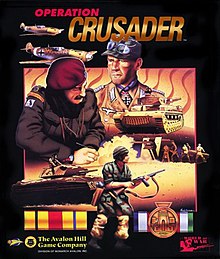
Avalon Hill Games Inc. is a game company that publishes wargames and strategic board games. It has also published miniature wargaming rules, role-playing games and sports simulations. It is a subsidiary of Hasbro, and operates under the company's "Hasbro Gaming" division.

The Perfect General is a computer wargame published in 1991 by Quantum Quality Productions.

Panzer General is a 1994 computer wargame developed and published by Strategic Simulations Inc. (SSI). It simulates conflict during World War II. The designers of Panzer General were heavily influenced by the Japanese wargame series Daisenryaku.
Close Combat is a series of real-time computer wargames by Atomic Games. In the Close Combat series, the player takes control of a small unit of troops and leads them in battles of World War II from a top down 2D perspective.
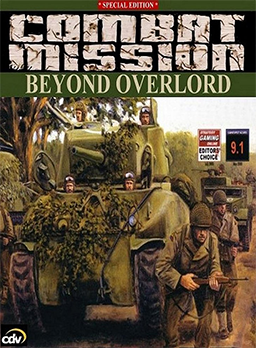
Combat Mission: Beyond Overlord is a 2000 computer wargame developed and published by Big Time Software. It is a simulation of tactical land battles in World War II.

Achtung Spitfire! is a 1997 computer wargame developed by Big Time Software and published by Avalon Hill. It is a turn-based air combat game taking place during the early half of World War II, including fixed-wing aircraft, air battles and operations by Luftwaffe, Royal Air Force and French Air Force in 1939–1943.
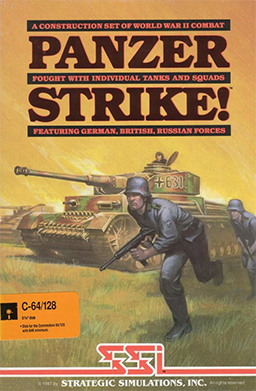
Panzer Strike is a 1988 tactical wargame that simulates small unit actions during World War II. It was made for Apple II and Commodore 64 and was released by Strategic Simulations.
Atomic Games, Inc. was an American video game developer based in Austin, Texas, specializing in wargames. The company was founded by Keith Zabalaoui in 1989, and is best known for developing the Close Combat series of real-time wargames, as well as the V for Victory series. In December 2000, due to the cancellation of a project titled Hammer's Slammers, Atomic Games laid off its entire staff, only keeping three executives. Atomic Games was acquired by Destineer on May 6, 2005, while collaborating on Close Combat: Red Phoenix and Close Combat: First to Fight. Atomic Games was developing a third-person shooter, Six Days in Fallujah, in cooperation with Konami, until the latter decided to withdraw from the project in August 2009, causing significant layoffs at Atomic Games. The company went on to finish the game, but never released it. Atomic Games released the game called Breach, which is a multiplayer-only downloadable first-person shooter. Destineer also owned Bold Games, and MacSoft, who also went down with Destineer.
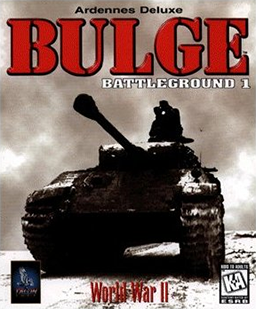
Battleground: Ardennes is a 1995 computer wargame developed and published by TalonSoft. It the first game in the Battleground series

Close Combat is a 1996 real-time computer wargame developed by Atomic Games and published by Microsoft. Set during World War II, it simulates the conflict between the United States' 29th Infantry Division and Germany's 352nd Infantry Division after the Invasion of Normandy. The player controls an artificially intelligent army whose behavior is dictated by psychological models: each soldier makes decisions based on the circumstances of the battlefield and can disobey the player's orders.

Kingmaker is a turn-based strategy game published by Avalon Hill in 1993. It was developed by American studio TM Games based on the Kingmaker board game.

The Great Battles of Alexander is a 1997 turn-based computer wargame developed by Erudite Software and published by Interactive Magic. Adapted from the GMT Games physical wargame of the same name, it depicts 10 of Alexander the Great's key conflicts, and simulates the interplay between Ancient Macedonian battle tactics and its rival military doctrines. Gameplay occurs at the tactical level: players direct predetermined armies on discrete battlefields, in a manner that one commentator compared to chess.

V for Victory: Market Garden is 1993 computer wargame developed by Atomic Games and published by Three-Sixty Pacific. It is part of the V for Victory video game series.

V for Victory: Gold-Juno-Sword is 1993 computer wargame developed by Atomic Games and published by Three-Sixty Pacific. It is part of the V for Victory series.

D-Day: America Invades is a 1995 computer wargame developed by Atomic Games and published by Avalon Hill for IBM PC compatibles. It is the third game in the World at War series, following Operation Crusader and World at War: Stalingrad.

World at War: Stalingrad is a 1995 computer wargame developed by Atomic Games and published by Avalon Hill. It is the second game in the World at War series, following Operation Crusader.

Western Front: The Liberation of Europe 1944–1945 is a 1991 computer wargame developed and published by Strategic Simulations, Inc. It was designed by Gary Grigsby.

Wooden Ships and Iron Men is a 1996 computer wargame developed by Stanley Associates and published by Avalon Hill. It is an adaptation of the board wargame Wooden Ships and Iron Men.
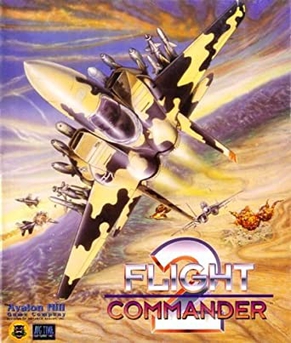
Flight Commander 2 is a 1994 computer wargame developed by Big Time Software and published by Avalon Hill. It was designed by Charles Moylan.

5th Fleet is a 1994 computer wargame developed by Stanley Associates and published by Avalon Hill.
